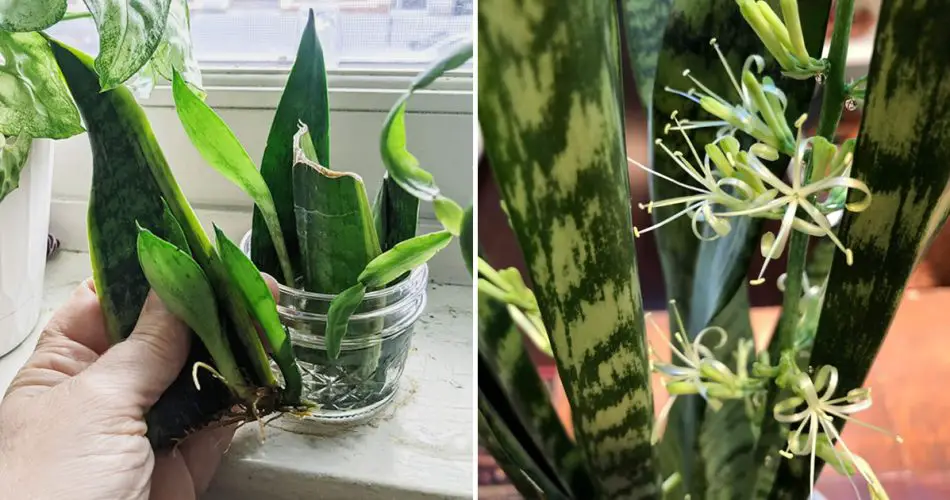Sansevieria, also known as snake plant or mother-in-law’s tongue, is one of the most cherished and widely cultivated indoor plants. Renowned for being nearly indestructible, it still requires specific care to produce its characteristic fragrant flowers.
Originating from West Africa, Sansevieria is globally sold as a decorative plant. It thrives in well-lit spaces but should be shielded from direct sunlight. This hardy plant requires minimal watering.
One intriguing feature of Sansevieria is its ease of propagation, and flowering can be stimulated with equal simplicity. Below, we explain how to achieve both.
Propagating Sansevieria in Water
Similar to many other houseplants, Sansevieria can be propagated in water using cuttings. The fascinating aspect of this propagation method is that numerous new plants can arise from a single long leaf.
- Cut a reasonably large leaf from the base of the plant, using a sterilized knife.
- Slice the leaf into pieces approximately 5-6 centimeters long, making a horizontal cut.
- Place the leaf pieces in a jar filled with water, with the cut side facing downward. The water should cover about one-third of the leaf piece.
- Put the jar in a well-lit location and add water occasionally. Completely change the water every two weeks.
- Once the roots reach around 2 centimeters in length, plant the leaf in soil and wait for the plant to grow.
Making Sansevieria Bloom
To make Sansevieria bloom, some straightforward measures need to be taken, ranging from maintaining the right temperature to providing the appropriate amount of fertilizer.
- Light Requirements: Sansevieria requires plenty of light but not direct sunlight. Although the plant can survive in low light conditions, adequate light is crucial for flowering.
- Temperature Considerations: Sansevieria can tolerate heat well but not extreme cold. Protect the plant from drastic temperature fluctuations and shield it from freezing temperatures.
- Fertilization: To encourage abundant and fragrant flowers, it’s crucial to apply a specific fertilizer. Consult your trusted nursery for the right recommendation.
- Watering Habits: Similar to succulents, Sansevieria should not be watered too frequently. Avoid wetting its leaves, and during winter, water only twice a month.
By following these simple steps, you can successfully propagate Sansevieria and encourage it to produce beautiful, fragrant flowers.



